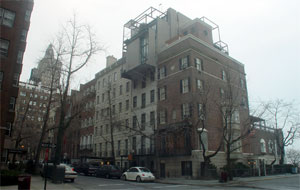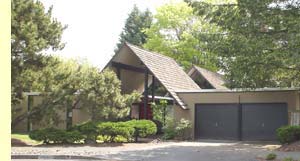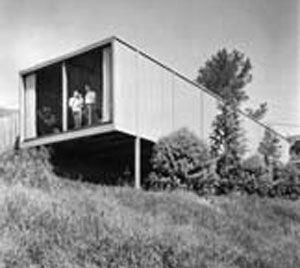In Amir Efrati’s article [Wright, Neutra and … Al Beadle? Unknown ’50s, ’60s Architects Get Big Push From Brokers; Rising Prices, Leaky Roofs [WSJ]](http://online.wsj.com/article/SB113529228196029885.html?mod=djemPJ#CHART) he discusses how “the real-estate boom hasn’t just been good to homeowners fortunate enough to cash in on it. It’s also helped the reputations of a crop of architects and developers who until now were pretty obscure.
* Paul Rudolph – Sarasota, Fla. – Covered porches, flat roofs. [Check out his Manhattan 4-level apartment built in the 1970’s.](http://www.paulrudolph.org/) He called and hired me to appraise it when he was terminally ill.
Architect: Rudolph
* Robert Rummer – California to Oregon in the 1960s and ’70s, known for flat roofs, is big in Portland.
Architect: Rummer
* H.B. Wolff – a 1950s developer in Denver.
* Abrom and Benjamin Dombar – houses built with mahogany and cyprus, who were apprentices of Frank Lloyd Wright.
* [Howard Meyer](http://www.cosmicool.com/meyer/lipshey/) – Dallas – Brightly painted front doors, window shades.
Architect: Meyer
* Al Beadle – Phoenix – Steel frames, foundations on stilts.
Architect: Beadle
* Homer Delawie – San Diego – Hillside homes on posts, floor-to-ceiling glass-walls.
Architect: Delawie
* Paul Hayden Kirk – Seattle – Japanese-influenced design like Shoji screens, courtyards.
”
Architect: Kirk
>Most of these characters never became as famous as their contemporaries,
>Richard Neutra and John Lautner, who were known for free-flowing spaces
>and avant-garde theatrics (the living room of one Lautner house was built
>to rotate on a turntable and become a patio).
“That’s mostly because “midcentury modern,” or MCM, was cutting-edge in the 1950s and ’60s but dated quickly and lost its popular appeal as buyers returned to more traditional features.”
“Moreover, its sleek, futuristic look was widely copied and over time became associated with cheap cartoonish knockoffs. Then, a new wave of architects came along who considered modernism “bland and boring,” says Thomas Hines, a professor of history and architecture at the University of California, Los Angeles. “They wanted to make allusions to the past.”
“Now, real-estate brokers and preservationists are resuscitating the reputations and homes of some lesser-known mid-century figures.”
And why not? With a heightened interest in real estate, it follows that many would seek to understand houses for their architecture as much as their function as shelter. The brokers recognize this as a marketing opportunity, a hook to sell these properties for their clients.
My dealings in New York with Paul Rudolph and a few other unusual properties has made me realize that, although the general consumer may not be interested in them, there is definitely a market segment that is completely wild about them. It was my experience that the limited marketability of these residential properties were made up by the premium their enthusiastic fan base would pay, usually resulting in a pricing offset.







